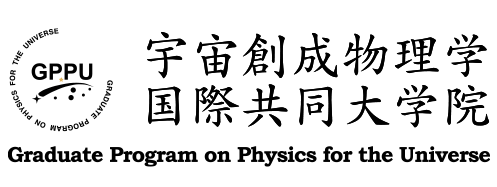GPPU Seminar
Determination of the proton charge radius using low energy electron scattering
Legris Clement
(Tohoku University)
Date
13:00-15:00, April 26th, 2024Place
(hybrid) Room 721, Science Complex A-B (H-03), Zoom registration mapAbstract
The proton charge radius is one of the most basic characteristics of the nucleons and is crucial for many applications, such as the determination of the Rydberg constant, for QED tests or to evaluate lattice QCD results. Its determination is a hot topic in the nuclear physics community as throughout several experiments, the proton charge radius has been reported either close to 0.84 fm or 0.88 fm using electron scattering as well as atomic and muonic hydrogen spectroscopy.
The proton charge radius is obtained from the cross section of the elastic lepton proton scattering at low momentum transfer Q^2. At ELPH, we are conducting the most reliable measurement of the proton charge radius with electron proton scattering during the ULQ^2 (Ultra-Low Q^2) experiment using the world’s lowest energy beam for electron scattering. The main specificities of the ULQ^2 experiment are the low beam energy and the use of a plastic CH! target that allows the absolute normalization of the hydrogen to the carbon scattering cross-section.
The new beam line as well as the twin spectrometers have been commissioned and the measurement of the detector efficiency is already complete. Most of the data taking for the proton charge radius measurement is finished and the analysis to determine the proton radius is underway.
Point
GSP 1Contact: Yusuke Tanimura (tanimura [at] nucl.phys.tohoku.ac.jp)
